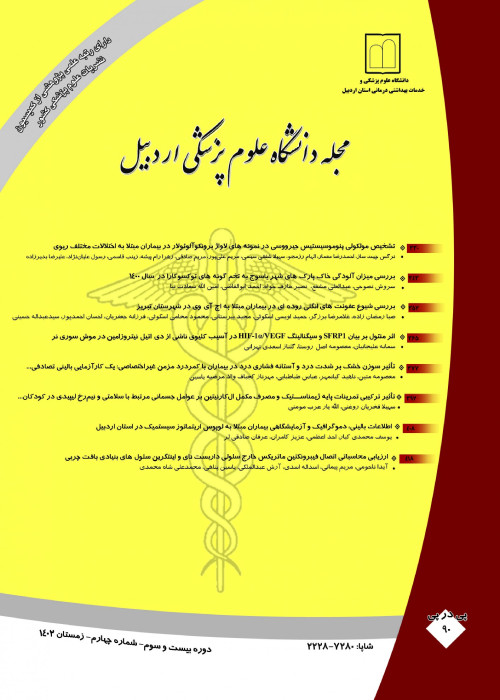Candida Albicans Skin Infection in Diabetic Patients
Abstract:
Background and Objectives
Candida Albicans is a fungus that frequently infects diabetic patients. Because it is very common infection in diabetics, we tried to determine the prevalence of infection and the asymptomatic carriers and show factors like age, sex, duration of diabetes and quality of disease control that probably have effect on infection.Methods
In this study 200 diabetic patients were chosen randomly and blood samples were taken for FBS and HbA1C and then skin smears were performed from body folds (Axillaries groin interdigital folds) and probable lesions. The skin samples were cultured in Chrom-Agar medium. Then the gathered data were analyzed.Results
Overall, from 200 patients, there were 180 (90%) negative culture and 20 (10%) positive cultures. Candidial infection in men and older patients were relatively higher than others. Candida infection in poor controlled diabetes was considerably higher. Infection in type-1 diabetes was more than type-2 diabetes. There was no correlation between duration of diabetes and prevalence of infection.Conclusion
Candida infection is more common in diabetic patients with poor control, male and older ones.Language:
Persian
Published:
Journal of Ardabil University of Medical Sciences, Volume:8 Issue: 29, 2008
Page:
250
magiran.com/p620207
دانلود و مطالعه متن این مقاله با یکی از روشهای زیر امکان پذیر است:
اشتراک شخصی
با عضویت و پرداخت آنلاین حق اشتراک یکساله به مبلغ 1,390,000ريال میتوانید 70 عنوان مطلب دانلود کنید!
اشتراک سازمانی
به کتابخانه دانشگاه یا محل کار خود پیشنهاد کنید تا اشتراک سازمانی این پایگاه را برای دسترسی نامحدود همه کاربران به متن مطالب تهیه نمایند!
توجه!
- حق عضویت دریافتی صرف حمایت از نشریات عضو و نگهداری، تکمیل و توسعه مگیران میشود.
- پرداخت حق اشتراک و دانلود مقالات اجازه بازنشر آن در سایر رسانههای چاپی و دیجیتال را به کاربر نمیدهد.
In order to view content subscription is required
Personal subscription
Subscribe magiran.com for 70 € euros via PayPal and download 70 articles during a year.
Organization subscription
Please contact us to subscribe your university or library for unlimited access!


